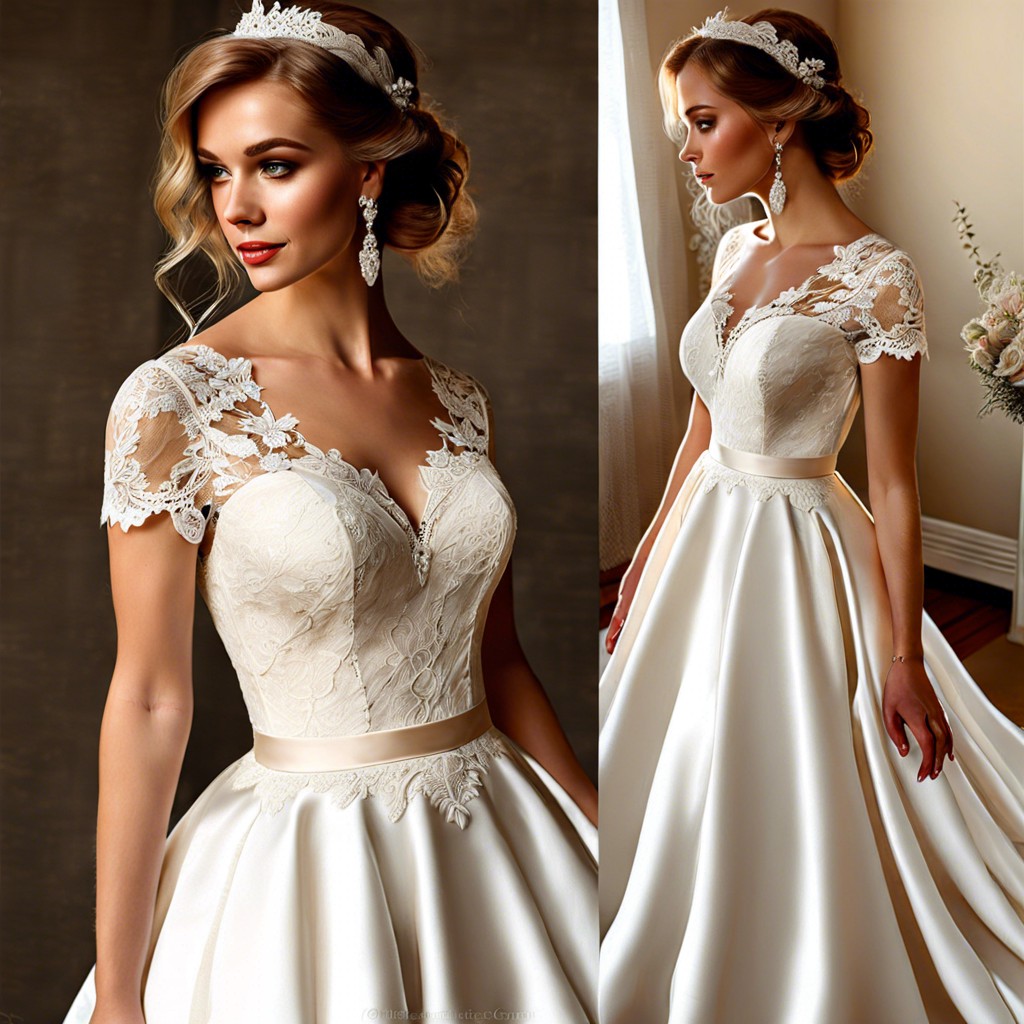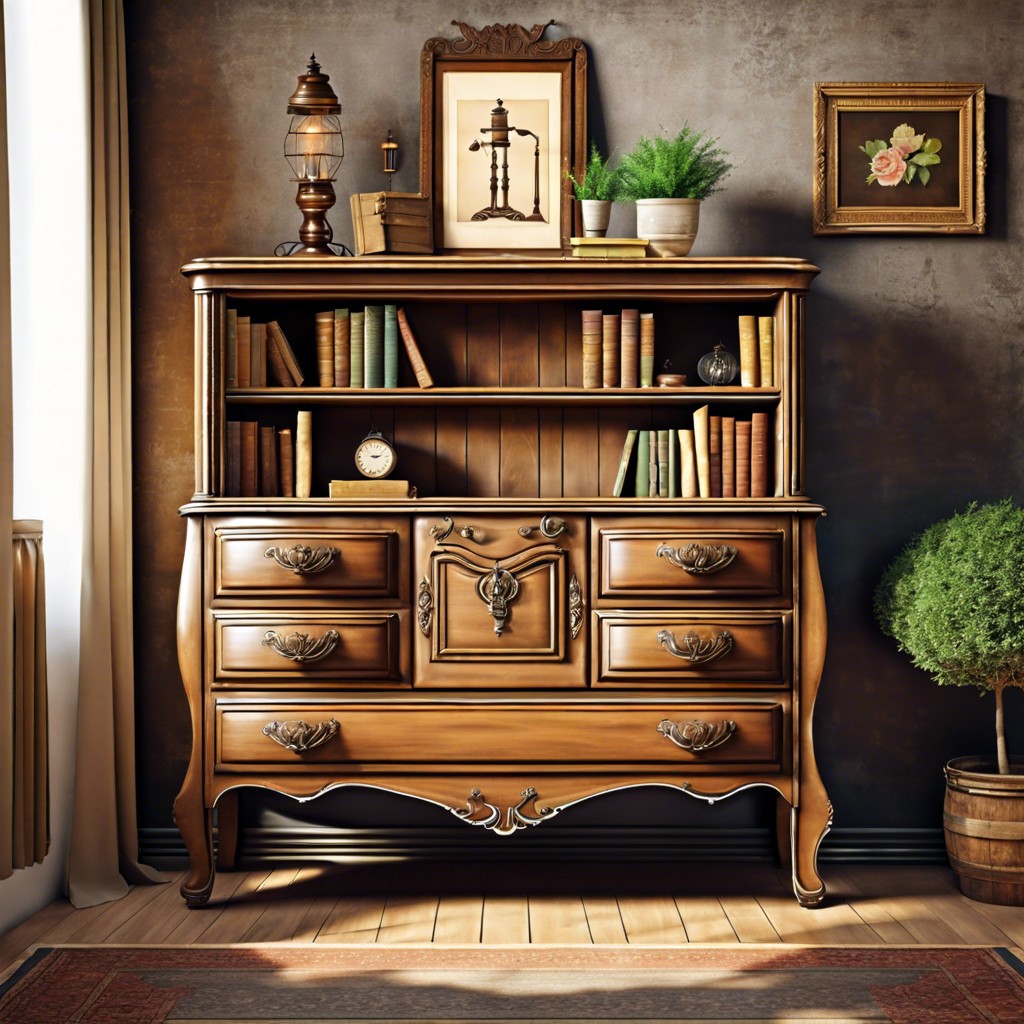Last updated on
Learn how to choose a vintage lamp that brightens up your space with both light and history.
Key takeaways:
- Vintage lamps can be dated by examining construction materials and craftsmanship cues.
- Different lamp styles reflect historical shifts in aesthetics and technology.
- Differentiating between reproductions and genuine vintage pieces requires careful examination.
- Proper care and maintenance of vintage lamps will help preserve their quality.
- When evaluating the condition and value of vintage lamps, consider wiring, condition, rarity, demand, provenance, patina, and original components.
Identification and Dating of Vintage Lamps
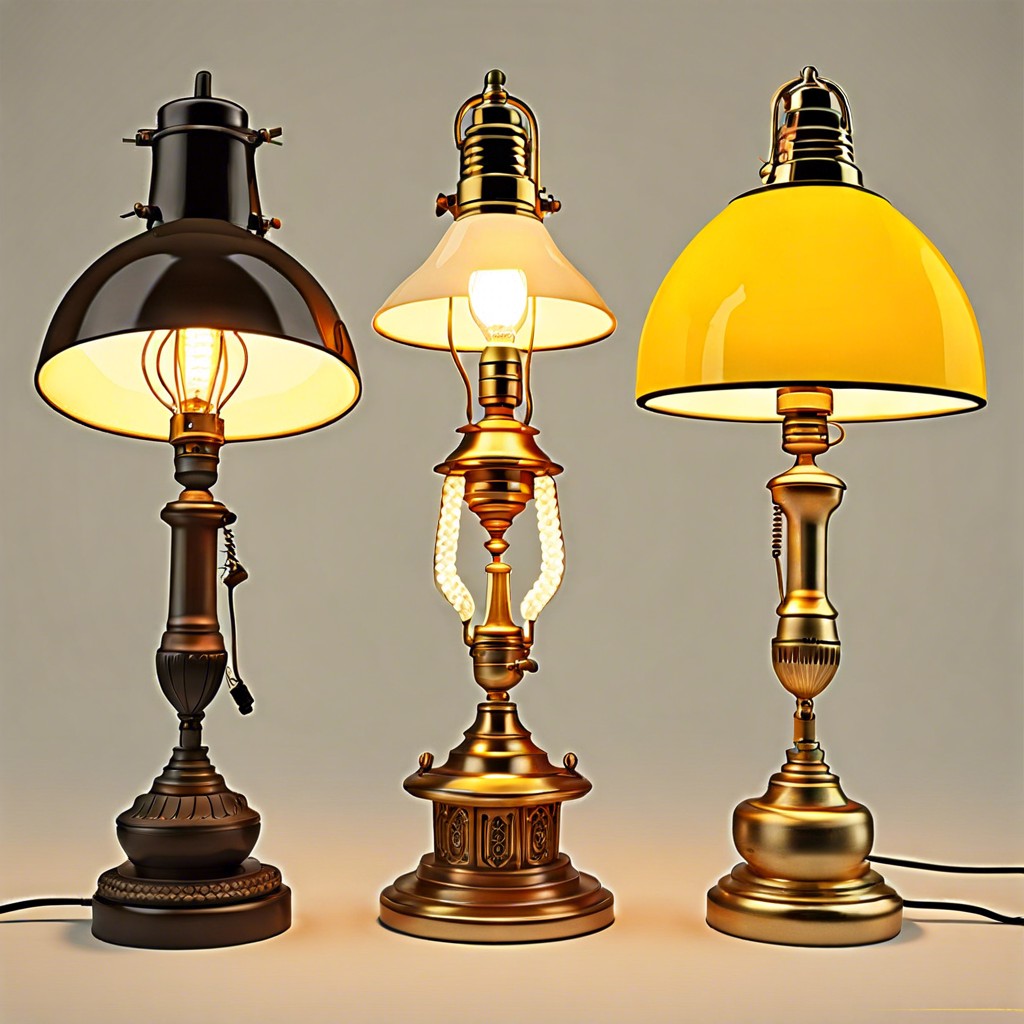
Determining the age of a vintage lamp can turn a lightbulb moment into a fascinating journey through history. Start by examining the lamp’s construction materials. Brass, for example, heralds from the late 19th to early 20th century, while a proliferation of plastic components suggests a mid-century origin.
Craftsmanship cues are like silent storytellers. Hand-painted details and patina speak to an earlier era. Meanwhile, if threading is present and the fitment is precise, consider a 20th-century birth.
Look for a manufacturer’s mark, often hidden on the underside or within the lampshade. This signature can be a golden ticket to dating your piece.
Electrical components hold historical secrets, too. Cloth-wrapped cords and porcelain sockets may indicate pre-war design, whereas rubber-insulated wires wave the flag for post-war years.
Studying style can narrow down the time frame significantly. Art Nouveau curves hint at 1890-1910, streamlined Art Deco suggests 1920s and 1930s, while Atomic Age designs catapult you to the 1950s and 1960s.
Keep in mind, legwork and a keen eye go hand in hand to illuminate the true age of a vintage lamp.
Historical Significance of Different Lamp Styles
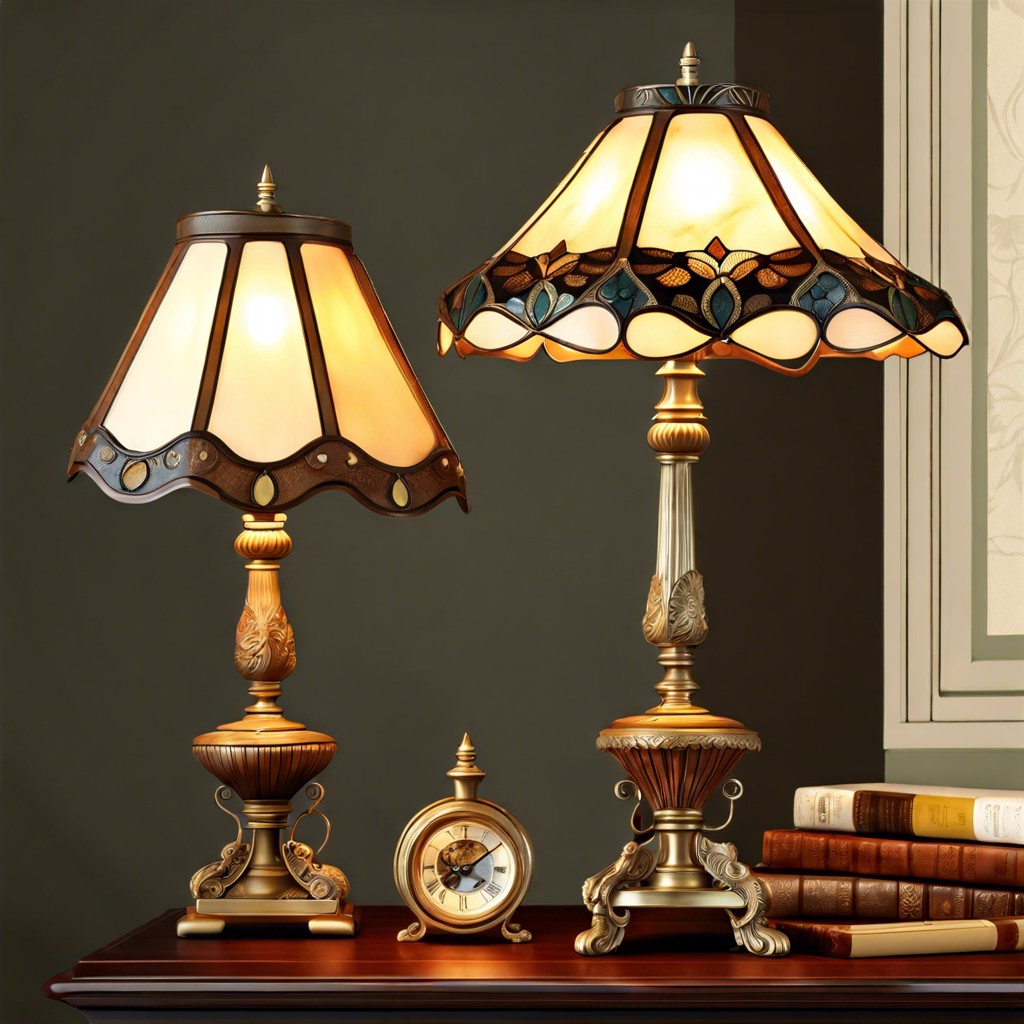
Throughout history, lamps have reflected the aesthetic and technological shifts of their times. Art Nouveau designs of the late 19th and early 20th centuries emphasized flowing lines and natural forms, mirroring society’s fascination with beauty and craftsmanship. Meanwhile, Art Deco lamps from the 1920s and 1930s showcased geometric shapes and bold colors, reflecting the exuberance of the Roaring Twenties and the machine age’s influence on design.
In the mid-20th century, modernist lamps with minimalist designs and new materials like plastic became popular. They signified the post-war era’s look to the future and its embrace of progress and innovation. On the other hand, the intricate designs of Tiffany lamps have always been synonymous with luxury and exclusivity, their hand-crafted stained glass standing as a testament to the Gilded Age.
Each lamp style serves as a time capsule, providing insight into the cultural and technological zeitgeist of its era. For the enthusiastic collector, understanding these historical contexts can transform a simple lighting instrument into a piece of storytelling.
Identifying Reproductions and Genuine Vintage Pieces
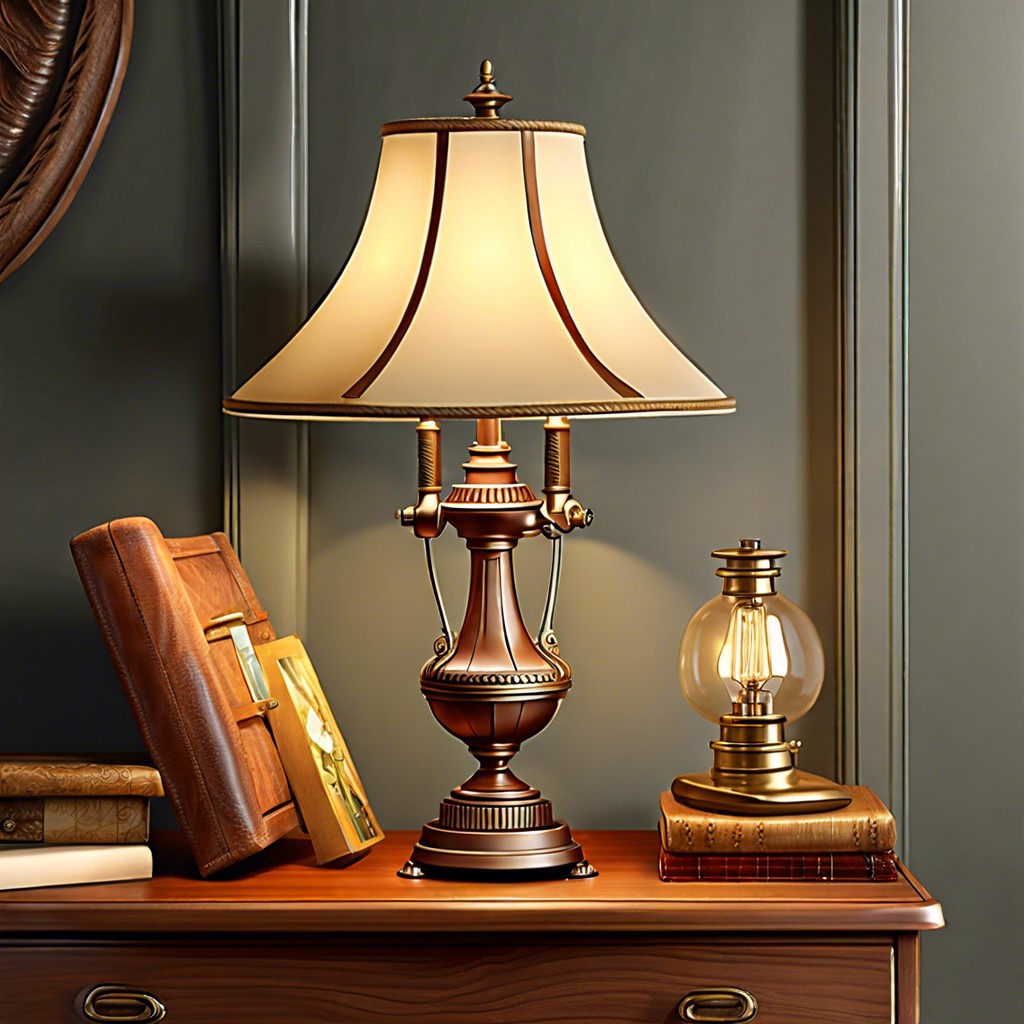
Discerning between an authentic vintage lamp and a clever reproduction can be as tricky as finding a needle in a haystack. Be on the lookout for signs of modern manufacturing, such as consistent patination or plastic components, which can give away a lamp’s true age. Manufacturers’ marks or signatures, when present, are like a time-stamped letter from the past, guiding you to the lamp’s origins.
Investigate the materials and construction techniques used. A genuine vintage piece will often display the wear and tear of time, such as oxidized metal, varied discoloration, and even old wiring. Craftsmanship tells a story; irregularities in hand-blown glass or hand-forged metalwork hint at the piece’s history.
Use light detective work to sniff out the past: research the piece’s supposed era and confirm whether the design aligns with the period’s stylistic attributes. Familiarize yourself with typical design elements from the timeframe in question. This knowledge is a flashlight in a dark room, revealing the tiny details that distinguish a true antique from a modern mimic.
Remember, a little skepticism can be your ally. Trust, but verify with a seasoned professional if your gut is sending mixed signals. An appraisal from a reputable dealer or a consultation with a historian can illuminate the finer points of your lamp’s pedigree.
Care and Maintenance of Vintage Lamps
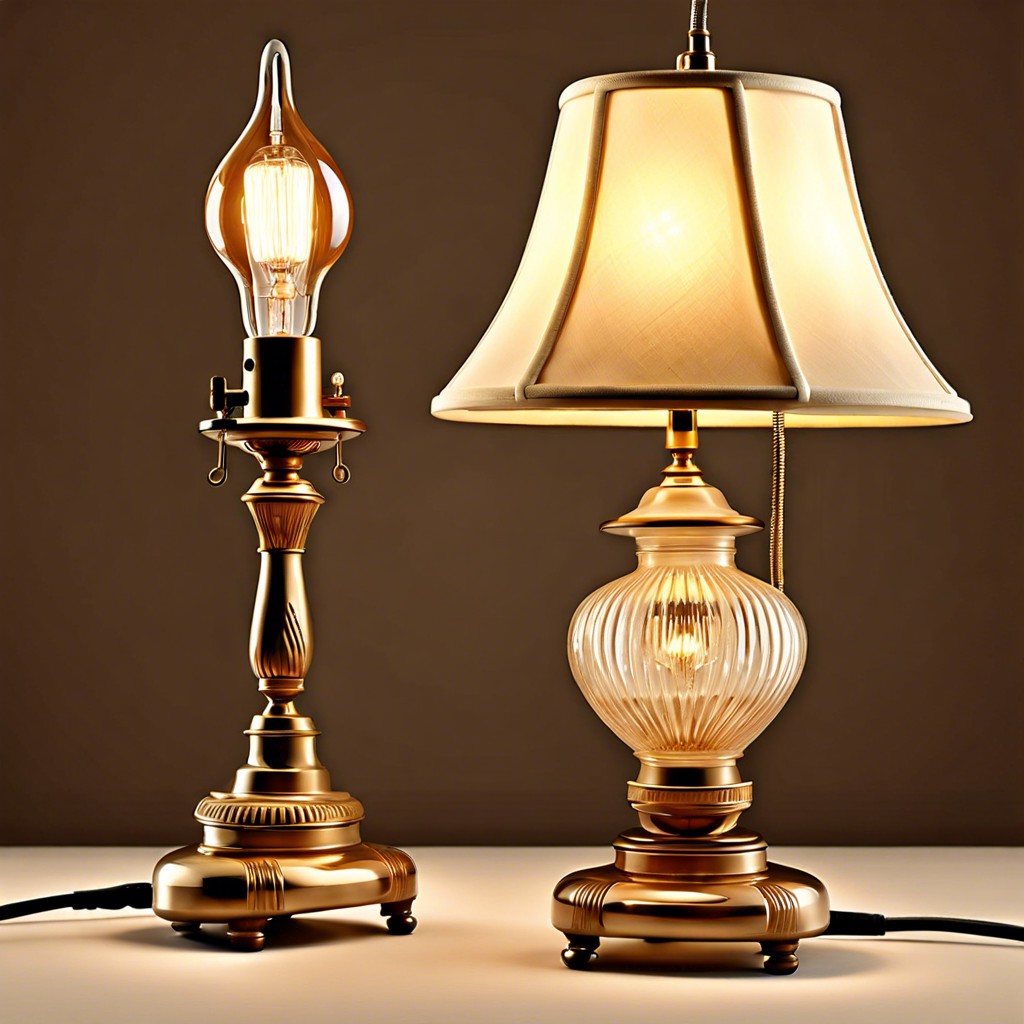
Vintage lamp care is akin to nurturing a fine wine; both improve with age if treated properly. Dust gently, favoring a soft cloth or a feather duster to avoid abrasive contact. Periodic cleaning restores their shine but requires a delicate touch. Use mild soap and water for glass parts and a suitable metal cleaner for brass or copper, always testing a small area first.
When handling wiring, think of it as fragile as an eggshell. Safety comes first; consult an electrician if you’re unsure about a lamp’s wiring. For those with patina, embrace the age marks. Forceful cleaning can strip away history.
Regarding the bulb, go old school with less wattage to minimize heat stress on antique wirings. And remember, like a trusted steed, these lamps will serve well if you spare a moment to tighten any loose screws or fittings that time may have nudged.
Evaluating the Condition and Value of Vintage Lamps
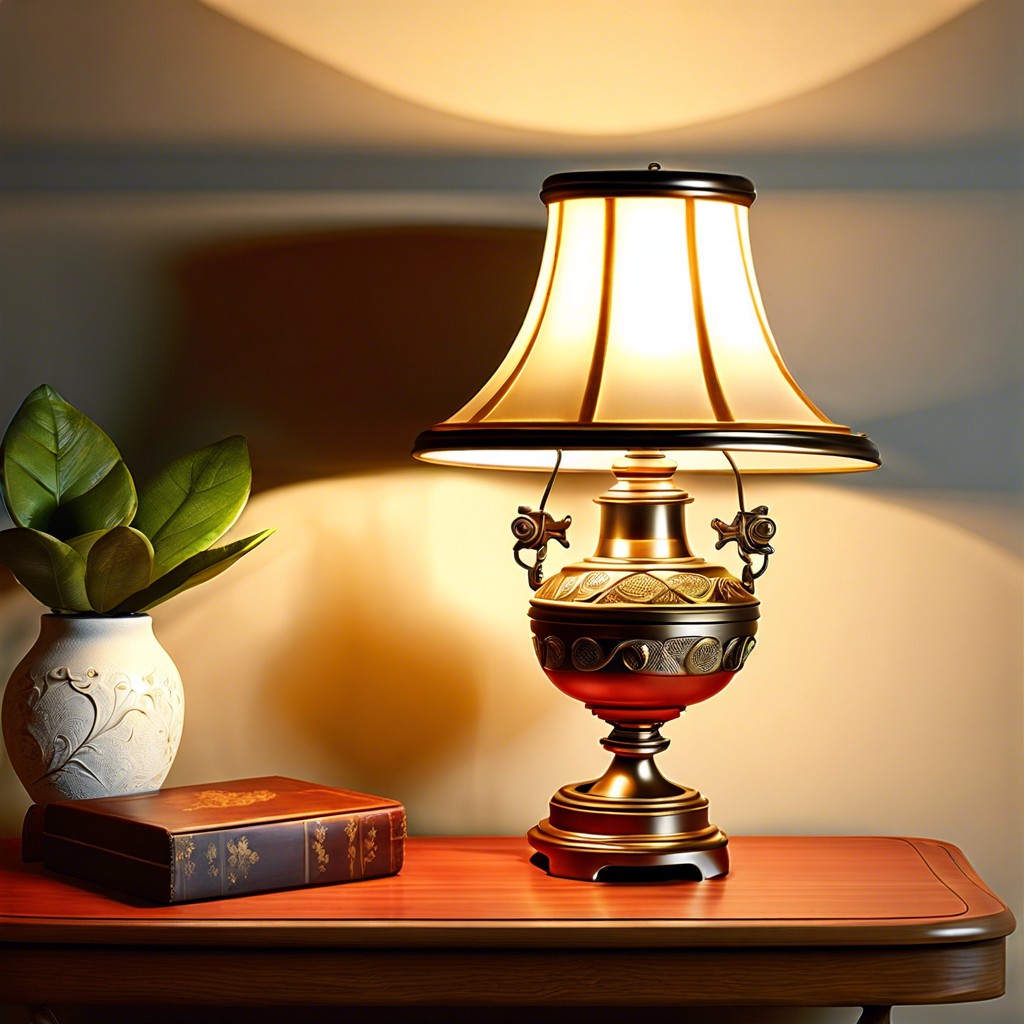
Determining the condition of a vintage lamp involves assessing several elements. First, inspect the wiring. Original, frayed wires signal age but require updating for safety. Next, examine the lamp’s base and shade for chips, cracks, or repairs, which can devalue the piece, yet also confirm authenticity.
When appraising value, rarity and demand play pivotal roles. A scarce design by a notable maker or from a popular era typically garners higher prices. Provenance adds to the allure, potentially increasing value if the lamp’s history can be authenticated.
Patina on metal components tells a story of age and care. While a well-preserved patina is prized, excessive tarnish might detract from value and require professional restoration.
Finally, original components such as the base, shade, and fixtures are key to value. Replacement parts, while functional, can significantly decrease a lamp’s collectible worth.
Remember, the eye of the beholder greatly influences value; what’s precious to one might be pedestrian to another. Therefore, market trends and personal preference should always be factored into your valuation.

